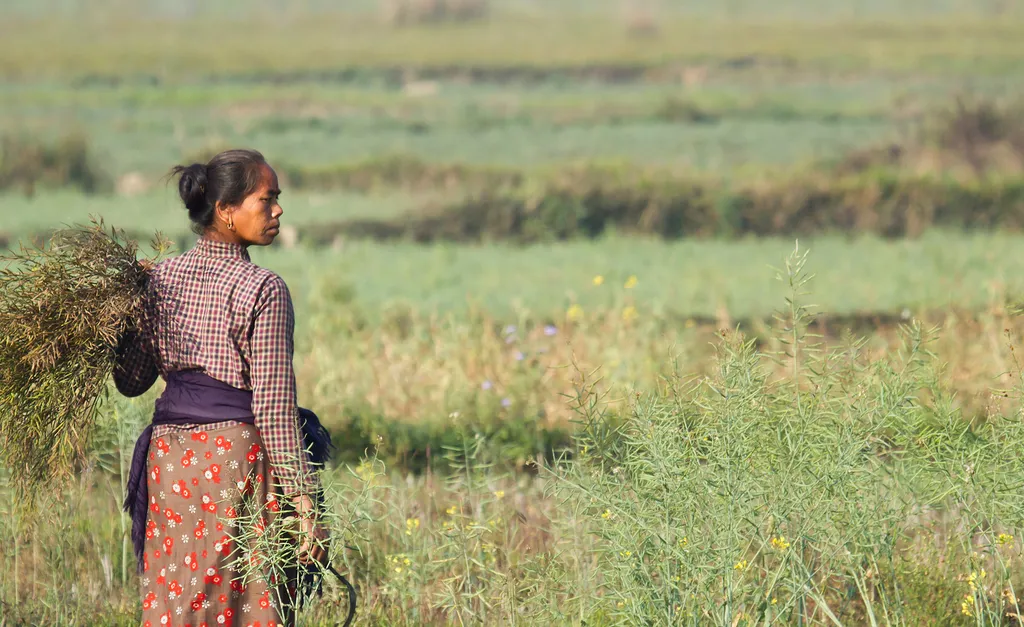It’s hard to believe that Australian women were not legally recognised as farmers until 1994. At census time, women on the land could only list their occupations as “domestics”, “helpmates”, or even “farmers’ wives”. Thankfully, the agriculture industry has come a long way in 30 years, with women now making up one-third of Australia’s agricultural workforce.
Madeleine Swan and Alanna Barrett are proud members of this crucial workforce. Both women not only play a key role on their respective sheep farms in Westbury (Tasmania) and Wagga Wagga (New South Wales), they also job share as Associate Director of Agricultural Research at ANZ. Their unique positions offer valuable insights into the evolving role of women in agriculture and the opportunities and challenges that lie ahead.
So, with women now firmly established in the agricultural workforce, what lessons can the sector learn from other industries to further support and grow female participation? Can the industry adopt some of the more family friendly policies, or is the nature of agricultural work so ‘hands-on’ that it’s difficult to achieve a family/work life balance?
Flexibility on the Farm
As the agriculture sector evolves, so too do the opportunities for women to work more flexibly and remotely. Advances in on-farm technology have played a key role in breaking down traditional barriers once faced by female farmers.
“They (older female farmers) can see that the attitudes are changing… they’ll give you a lot of anecdotes of how they weren’t really allowed in the shearing shed. But changes in both attitudes and on-farm technology have really changed the roles of women on farm,” says Madeleine.
The consolidating nature of the industry, and rise of data-driven farming, is also opening new doors. “Australia’s farms are getting bigger, which means we’re getting more sophisticated, analytical, and business like in the way farms are managed,” adds Alanna. “That generates a greater range of opportunities and often flexibility for those who require it.”
By embracing flexible work models, the agriculture industry can better support women – especially those balancing family responsibilities – while also tapping into a broader pool of talent and expertise.
“Maddy and I are both testament to ANZ’s supportive and flexible work environment, allowing for a career in Agriculture, alongside family and farming responsibilities,” says Alanna. “It’s not just our immediate people leader; the support and frameworks exist across all the leaders of our business. It really shines through.”
Rethinking succession in farming families
In the heart of Australia’s farming communities, women have long played a pivotal role. Beyond their contributions in the paddock, women are central to farm business management, financial planning, and long-term strategic decisions.
“So effectively they’re a business manager, HR manager, workplace health and safety consultant, tractor driver, livestock handler, really a jack of all trades. These women are contributing to it all and often have their own children or older generations (or both!) on farm to look after as well,” says Alanna.
One of the most overlooked aspects of this dynamic is succession. “There is a lot of discussion about who takes over the physical task of farming, but often there’s a whole succession of handing over the books, which goes on quietly behind the scenes,” explains Alanna.
As the sector looks to the future, supporting these intergenerational transitions will be key to retaining skilled women and fostering inclusive, sustainable farming communities.
Making employment gains
Underemployment in Australia’s agriculture sector has been steadily declining for both men and women over recent years, but the improvement has been more pronounced for women. Despite recent challenges – including droughts in some regions and floods in others – new data shows a sharp drop in the underemployment rate for women in agriculture, falling from 5.5 percent to just 3.3 percent. This remains slightly higher than the rate for men, which now sits at 2 percent.
Compared to other industries, women in agriculture, forestry, and fisheries experience some of the lowest underemployment rates – second only to women in mining and on par with those in professional services.
Farming forward: empowering the next generation
The positive employment trend comes at a time when more women are pursuing agriculture-related studies. Women now make up almost 55 percent of those studying agronomy and agriculture at tertiary institutions across Australia. In fact, they represent over 60 percent of research higher degree completions in agriculture and environmental sciences.
“There’s a balloon of young, qualified, keen, eager women about to come into the agriculture sector. How do we get them to be their most productive?” asks Madeline.
This growing pipeline of qualified women presents a major opportunity for the sector to attract and retain skilled talent. With the right support, these graduates could help shape the future of Australian agriculture – bringing innovation, resilience, and diversity to the industry

